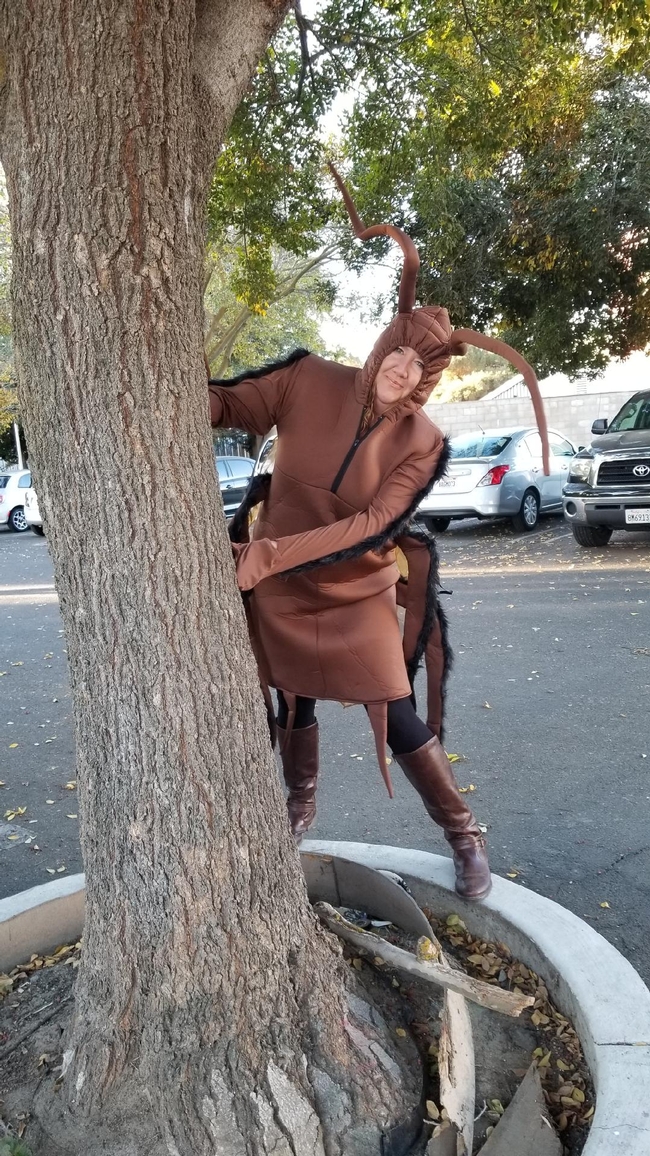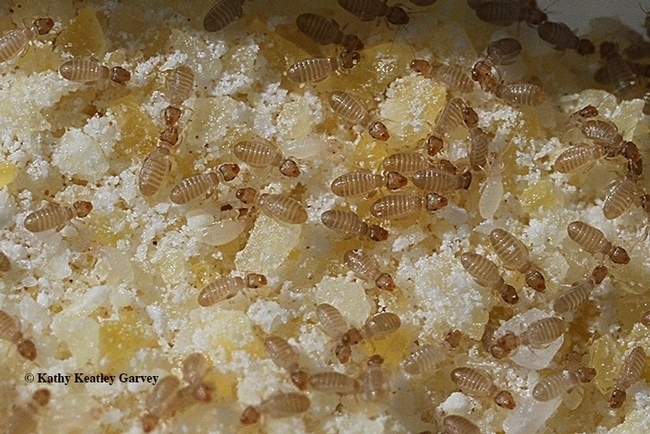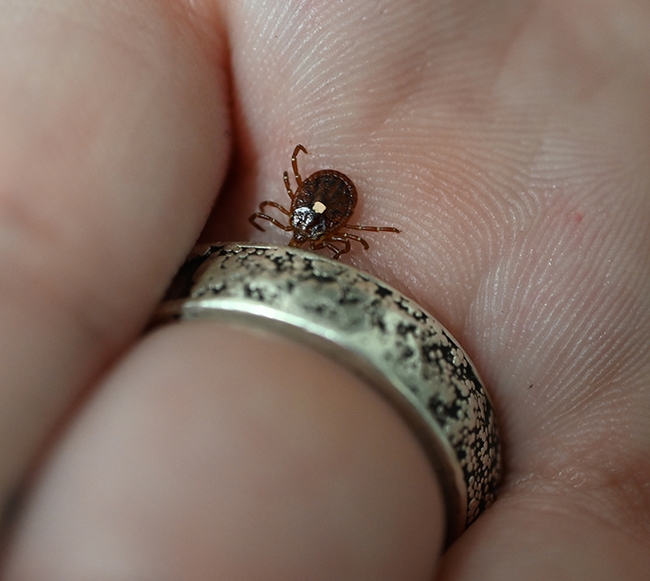- Author: Kathy Keatley Garvey
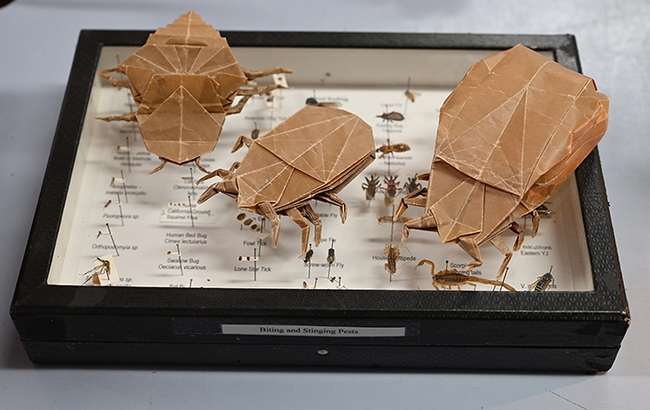
They learned that "medical entomologist is the study of arthropods (such as insects and ticks) that spread pathogens that cause human disease. It is also important to study insects and arthropods that spread diseases to other animals! This field o study is called veterinary entomology. Some diseases affect both humans and animals. This is called a zoonotic disease." (from Bohart Museum poster)
They asked questions. They observed "the vampires" through microscopes. And they left with first-hand information.
The presenters included:
-
Robert "Bob" Kimsey, forensic entomologist, Department of Entomology and Nematology, who answered questions about medical entomology.
-
Luz Maria Robles, public information officer, Sacramento-Yolo Mosquito and Vector Control District, who discussed and displayed mosquitoes and how to keep yourself safe. See https://www.fightthebite.net/
- Carla-Cristina "CC" Melo Edwards, doctoral student and mosquito researcher in the laboratory of medical entomologist-geneticist Geoffrey Attardo, associate professor of entomology, UC Davis Department of Entomology and Nematology, who fielded questions about mosquitoes. Attardo displayed enlarged images of mosquitoes, including a blood-fed Aedes aegypti, and a female and male Culex tarsalis.
- Moriah Garrison, senior entomologist and research coordinator with Carroll-Loye Biological Research (CLBR), (owned by doctoral scientists Scott Carroll and Jenella Loye, affiliated with the Department of Entomology and Nematology), displayed live ticks and mosquitoes.
- Nazzy Pakpour, UC Davis alumna, Novozymes scientist and author, displayed her newly published children's book, Please Don't Bite Me
For the occasion, UC Davis alumnus Kevin Murakoshi, gifted the Bohart Museum a trio of origami sculptures: a tick, an engorged tick and a bedbug. At an earlier open house, he presented the museum with origami sculptures of praying mantises. "They're beautiful," said UC Davis distinguished professor Lynn Kimsey, director of the Bohart Museum. "We're going to display them in our hallway."
The museum houses a global collection of eight million insect specimens, plus a live insect petting zoo (including Madasgascar hissing cockroaches and walking sticks), and a gift shop. It is located in Room 1124 of the Academic Surge Building, 455 Crocker Lane. UC Davis.
The next open house, themed "Monarchs," is set for Saturday, Nov. 4 from 1 to 4 p.m. All open houses are free and family friendly and include a family arts-and-crafts activity. For more information, contact the Bohart Museum at bmuseum@ucdavis.edu or telephone (530-752-0493.
(Part 2 of the open house will be published Friday, Sept. 29)
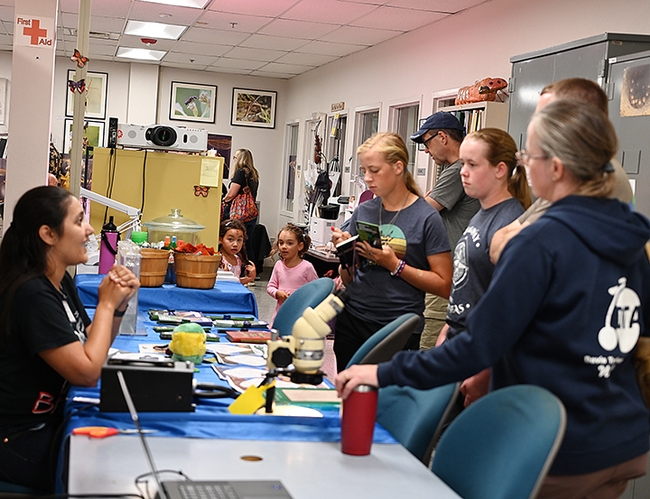
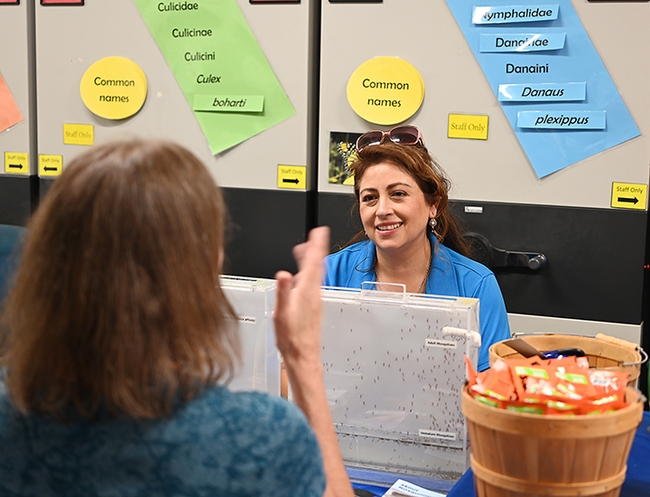
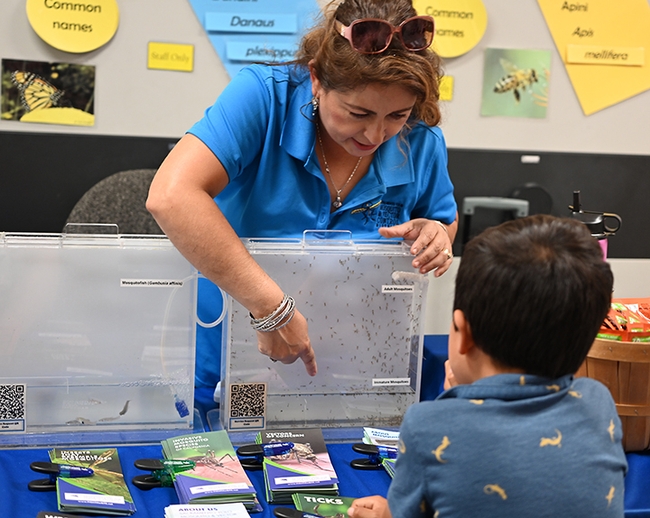
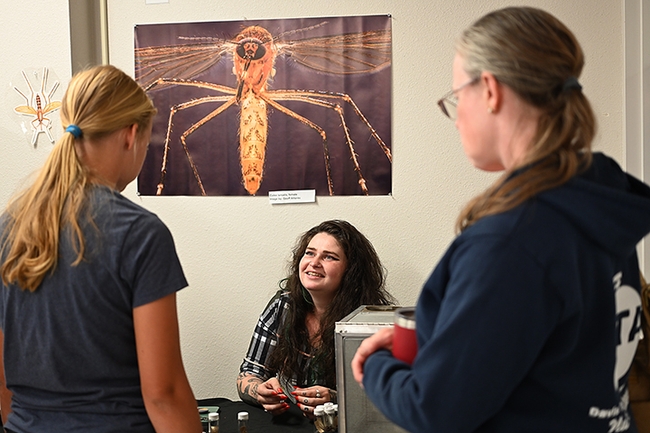
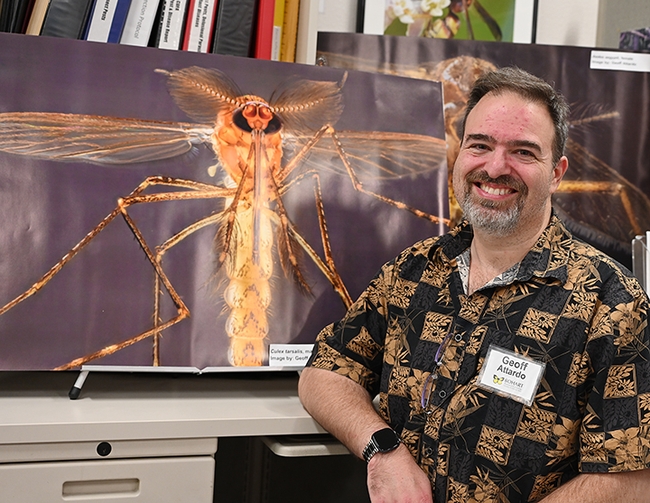
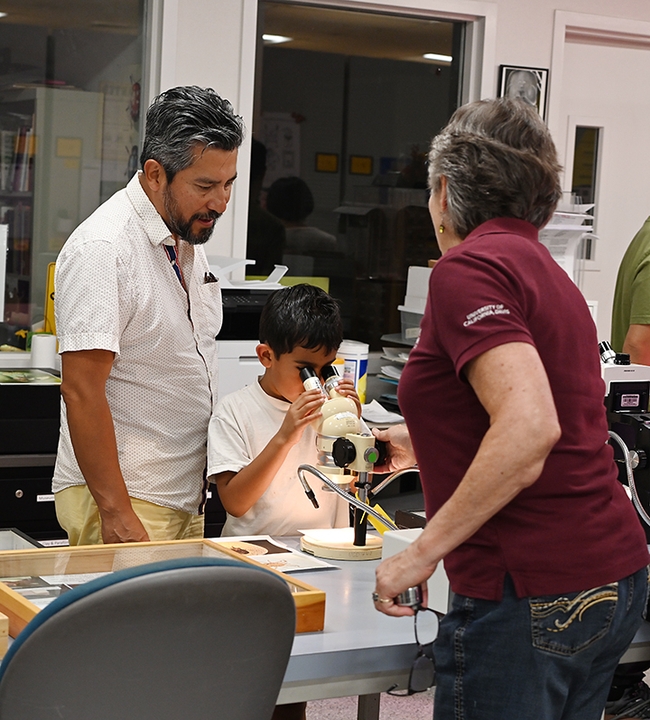
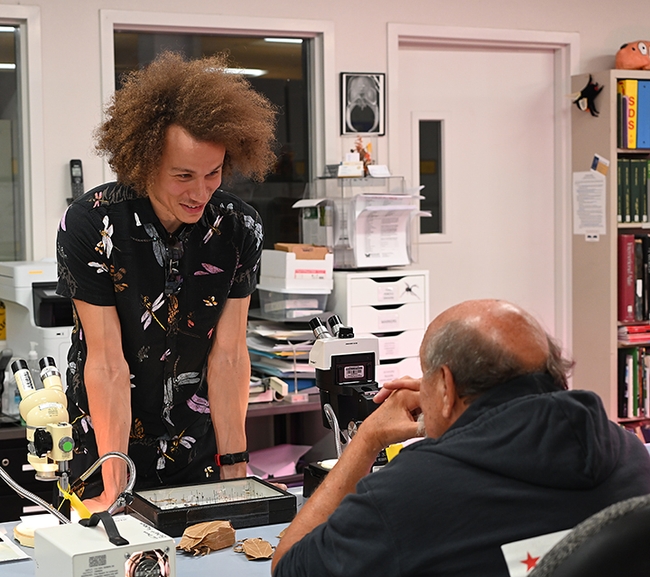
- Author: Kathy Keatley Garvey
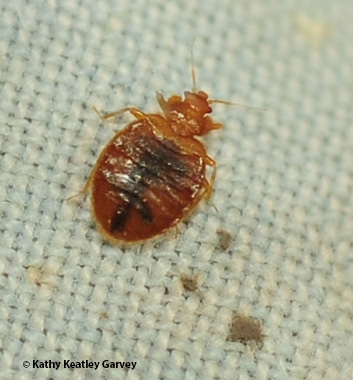
The open house set from 1 to 4 p.m., Saturday, Sept. 23 in Room 1124 of the Academic Surge Building, 455 Crocker Lane, UC Davis. It's free and family friendly and parking is also free. It's an opportunity for attendees to learn more about the "nuisance insects," and ask questions.
The line-up, as of today:
- Lynn and Bob Kimsey of the UC Davis Department of Entomology and Nematology faculty. Lynn, a hymenopterist, is a UC Davis distinguished professor who teaches general entomology and the biodiversity of California insects and serves as the director of the Bohart Museum, and Bob is a forensic entomologist, specializing in public health entomology; arthropods of medical importance; zoonotic disease; biology and ecology of tick-borne pathogens; tick feeding behavior and biochemistry.
- Carla-Cristina "CC" Melo Edwards, a first-year doctoral student in the laboratory of medical entomologist-geneticist Geoffrey Attardo, associate professor of entomology, UC Davis Department of Entomology and Nematology. She will share her expertise on mosquitoes and show specimens.
- Moriah Garrison, senior entomologist and research coordinator with Carroll-Loye Biological Research (CLBR). She is scheduled to show live ticks and mosquitoes and field questions.
- Educators from the Sacramento-Yolo Mosquito and Vector Control District. They will discuss mosquitoes and their program
- Nazzy Pakpour, UC Davis alumna, Novozymes scientist and author of Please Don't Bite Me
- Jeff Smith, curator of the Bohart Museum's ;Lepidoptera (butterflies and moths) collection. He will display butterfly specimens collected globally. Also on the "Lep crew" are Bohart volunteers Greg Kareofelas and Brittany Kohler.
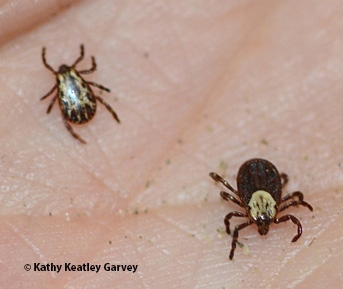
Petting Zoo. A popular attraction is the live petting zoo; visitors are encouraged to hold or get acquainted with live Madagascar hissing cockroaches and stick insects
Family Arts and Crafts Activity. The event will be held outside and will highlight two collecting techniques, said Tabatha Yang, education and outreach coordinator.
- Clear Packing Tape Art. "Clear packing tape is a good way to collect small, hard-to-see insects," Yang said. "Glitter will mimic small insects like fleas or bed bugs. Putting the tape on white paper makes it easy to look at them under a microscope and for this craft it will make a pretty card."
- Making insect collecting or "kill" jars. Participants are asked to bring a recycled jar. "This should be a clean and dried glass jar with a wide, metal top--think jam, pickle, peanut butter jars. Four to 16-ounce jars work well. We will have some on hand as well, but recycling is good! We will fill the bottom with plaster of paris and let it dry and teach people how to use it properly, using something like nail polisher remover containing ethyl acetate as the killing agent. A UC Davis Department of Entomology and Nematology video explains the procedure: https://youtu.be/s8yCzFGzbn8?si=71sNmA5l8NyP1zj0

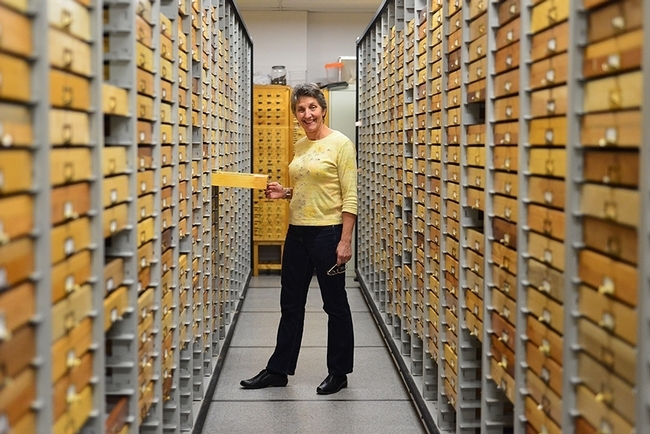
- Author: Kathy Keatley Garvey
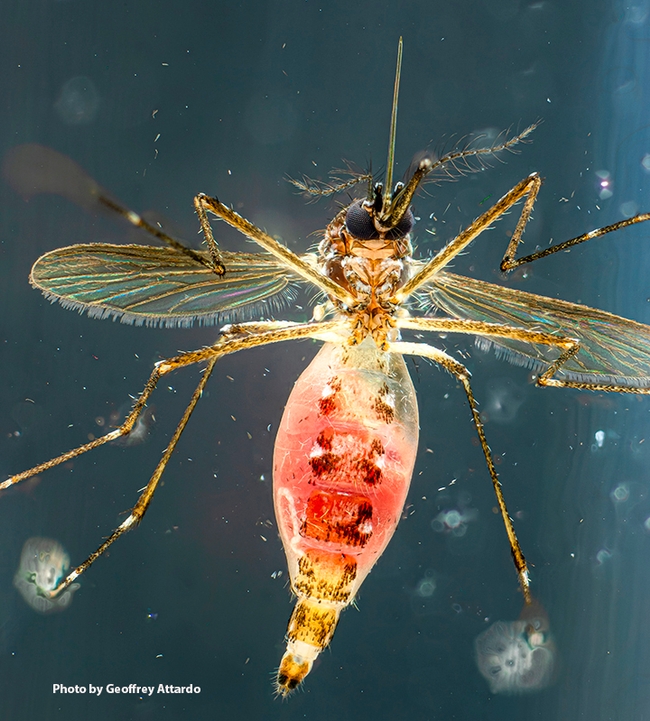
When the Bohart Museum of Entomology hosts an open house on "Household Vampires" from 1 to 4 p.m., Saturday, Sept. 23, activities will take place both inside and outside.
Inside? The presenters will talk about mosquitoes, bed bugs, fleas and ticks in Room 1124 of the Academic Surge Building, 455 Crocker Lane, UC Davis campus. They will show live insects and specimens and field questions.
Outside? The latest news is the family arts and crafts activity.
Tabatha Yang, education and outreach coordinator, announced the the arts and crafts activity "will highlight two collecting techniques."
- Clear Packing Tape Art. "Clear packing tape is a good way to collect small, hard-to-see insects," Yang said. "Glitter will mimic small insects like fleas or bed bugs. Putting the tape on white paper makes it easy to look at them under a microscope and for this craft it will make a pretty card."
- Making insect collecting or "kill" jars. Participants are asked to bring a recycled jar. "This should be a clean and dried glass jar with a wide, metal top--think jam, pickle, peanut butter jars. Four to 16-ounce jars work well. We will have some on hand as well, but recycling is good! We will fill the bottom with plaster of paris and let it dry and teach people how to use it properly, using something like nail polisher remover containing ethyl acetate as the killing agent. A UC Davis Department of Entomology and Nematology video explains the procedure: https://youtu.be/s8yCzFGzbn8?si=71sNmA5l8NyP1zj0
Inside, the presenters will include:
- Lynn and Bob Kimsey of the UC Davis Department of Entomology and Nematology faculty. Lynn, a hymenopterist, is a UC Davis distinguished professor who teaches general entomology and the biodiversity of California insects and serves as the director of the Bohart Museum, and Bob is a forensic entomologist, specializing in public health entomology; arthropods of medical importance; zoonotic disease; biology and ecology of tick-borne pathogens; tick feeding behavior and biochemistry.
- Carla-Cristina "CC" Melo Edwards, a first-year doctoral student in the laboratory of medical entomologist-geneticist Geoffrey Attardo, associate professor of entomology, UC Davis Department of Entomology and Nematology. She will share her expertise on mosquitoes and show specimens.
- Moriah Garrison, senior entomologist and research coordinator with Carroll-Loye Biological Research (CLBR). She is scheduled to show live ticks and mosquitoes and field questions.
- Educators from the Sacramento-Yo;o Mosquito and Vector Control District. They will discuss mosquitoes and their program
- Nazzy Pakpour (Novozymes scientist and author of Please Don't Bite Me)
- Jeff Smith, curator of the Bohart Museum's Lepidoptera (butterflies and moths) collection. He will display butterfly specimens collected globally. Also on the "Lep crew" are Bohart volunteers Greg Kareofelas and Brittany Kohler.
Professor Attardo, who maintains a lab website on Vector Biology and Reproductive Biology at http://attardo-lab.com, and chairs the Designated Emphasis in the Biology of Vector-Borne Diseases, will display some of his mosquito images, including a blood-fed Aedes aegypti, and a female and male Culex tarsalis. Alex Wild, a UC Davis doctoral alumnus and curator of entomology, University of Texas, Austin, will display an image of mosquito larvae that currently hangs in Briggs Hall, home of the UC Davis Department of Entomology and Nematology. Wild's insect images can be viewed on his website, https://www.alexanderwild.com.
The Bohart Museum houses a global collection of eight million insect specimens; a live petting zoo (including Madagascar hissing cockroaches and stick insects); and an insect-themed gift shop stocked with books, posters, T-shirts, hooded sweatshirts and jewelry.
Resource:
Bohart Museum to Spotlight Household Vampires (UC Davis Department of Entomology and Nematology, Sept. 14, 2023)
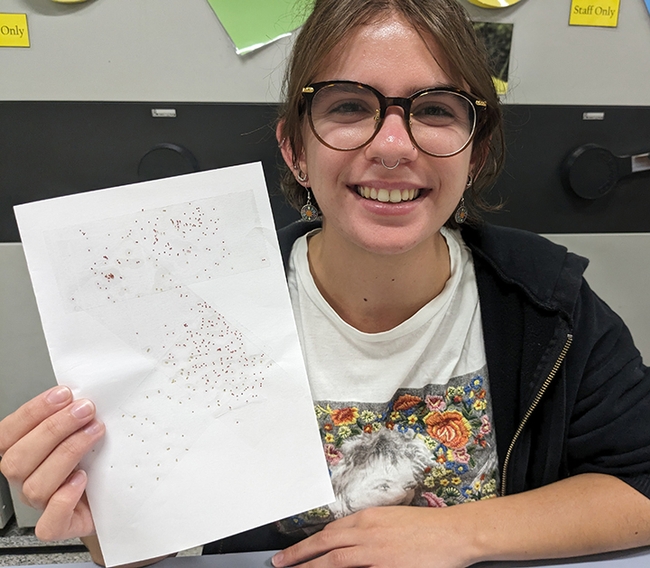
- Author: Kathy Keatley Garvey
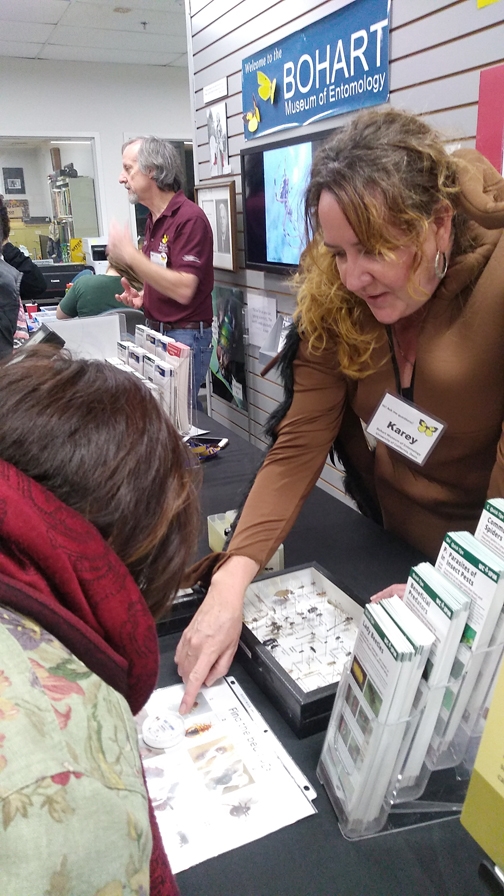
However, bed bugs, carpet beetles and pantry pests got into the act and competed mightily for the spotlight.
The occasion: The UC Davis Bohart Museum of Entomology open house, held Sunday afternoon, Nov. 18. The theme: "Urban Entomology."
The three-hour event starred a cockroach--well, a human dressed as a cockroach.
Karey Windbiel-Rojas of the UC Statewide Integrated Pest Management Program (UC IPM)--she's the associate director for Urban and Community IPM who serves as the area urban IPM advisor for Yolo, Sacramento and Solano counties--donned her cockroach costume and joined Bohart scientists in fielding questions about urban pests.
The pests the UC IPM scientist has been dealing with lately include carpet beetles, bed bugs and pantry pests. She handed out two newly published Quick Tips on carpet beetles and pantry pests, as well as information on other pests. What are some of the other pests? Check out UC IPM's Quick Tips library at http://ipm.ucanr.edu/QT/index.html.
UC IPM offers a wealth of information on its website, including
- home, garden, turf and landscape pests
- agricultural pests
- natural environment pests, and
- exotic and invasive pests
But when a cockroach is scurrying about (that was Karey's Halloween costume, by the way), the mind focuses on the "ins" and "outs" of cockroaches. Mostly the "outs."
As in: Stay. Out. Never. Ever. Come. Back. In.
"There are six species of cockroaches in California that can become pests: German cockroach, brownbanded cockroach, oriental cockroach, smokybrown cockroach, American cockroach, and Turkestan cockroach. A seventh species, the field cockroach, is not really a pest. It is usually found outdoors, but sometimes comes indoors when it is hot or dry and is often mistaken for the German cockroach. Of these seven species, the one that has the greatest potential for becoming persistent and troublesome is the German cockroach, which prefers indoor locations. Oriental and American cockroaches occasionally pose problems in moist, humid areas."--Excerpt from UC IPM Pest Note on Cockroaches.
As the UC IPM website indicates, cockroaches "may become pests in homes, schools, restaurants, hospitals, warehouses, offices, and virtually in any structure that has food preparation or storage areas. They contaminate food and eating utensils, destroy fabric and paper products, and impart stains and unpleasant odors to surfaces they contact."
Cockroaches can definitely give you a difficult time.
And speaking of giving, today (Tuesday) is Giving Tuesday, and UC IPM Director Jim Farrar has committed to eating a pest if at least 20 people make a donation of $10 or more to UC IPM.
UC Agriculture and Natural Resources (UC ANR) spokesperson Pamela Kan-Rice, assistant director of News and Information Outreach, informed us: "With your donation and Jim's appetite, there will be one less pest to deal with! Spread the word to colleagues, family and friends to help UC IPM meet this goal. All UC IPM donors will be invited to the special pest eating event which will take place in the afternoon on Wednesday, Nov 28 in the UC ANR building." The dining experience is expected to begin at 4 p.m.
Here's where to donate before midnight tonight: https://donate.ucanr.edu/pages/integrated-pest-management.
We asked Karey if the pest to be consumed could possibly be a cockroach. Or a garden-variety pest, such as a dandelion.
"To my knowledge he will not be eating a cockroach or a dandelion," she commented in an email. "I don't want to give away what he might be eating (so I don't actually know for sure)."
That would be a definite "no" on the roach!
(Update: Director Farrar ate corn smut, grasshoppers and live mealworms.)
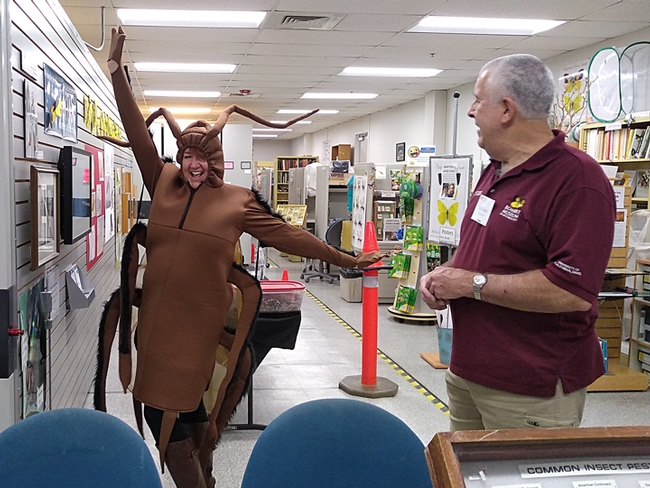
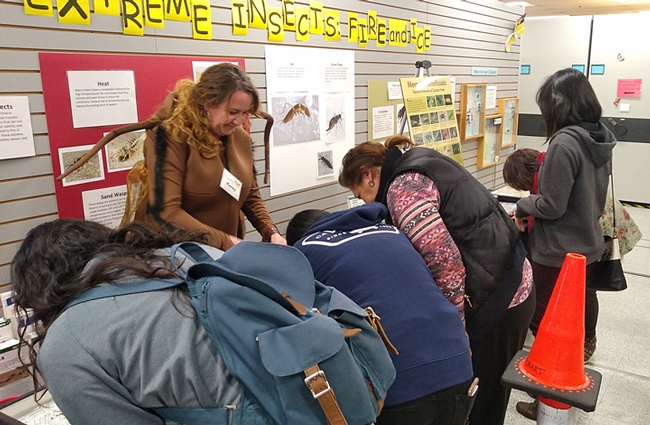
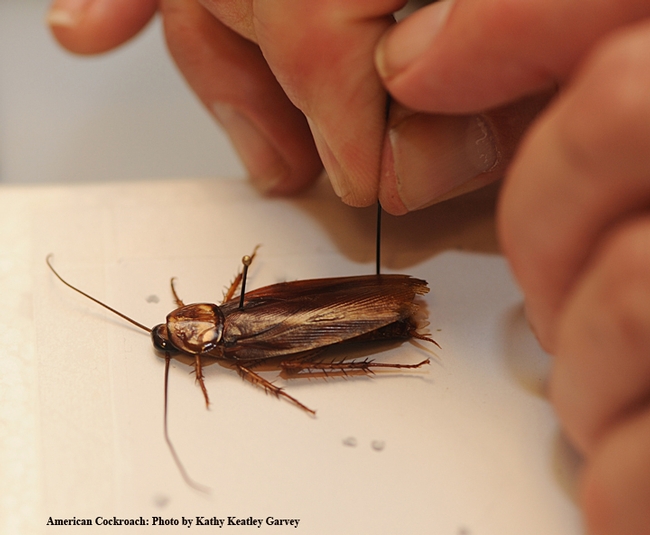
- Author: Kathy Keatley Garvey
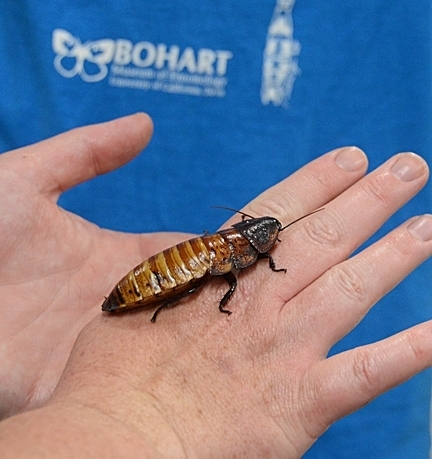
Think bed bugs, cockroaches, carpet beetles and pantry pests, among others.
Those are some of the critters you'll learn about if you attend the Bohart Museum of Entomology's open house on urban entomology, set from 1 to 4 p.m., Sunday, Nov. 18 in Room 1124 of the Academic Surge Building on Crocker Lane, UC Davis campus. It's free and family friendly.
Karey Windbiel-Rojas of the UC Statewide Integrated Pest Management Program (UC IPM)--she's the associate director for Urban and Community IPM who serves as the area urban IPM advisor for Yolo, Sacramento and Solano counties--will be there to greet visitors and answer questions, as will Bohart Museum scientists and staff.
The pests the UC IPM scientist has been dealing with lately include carpet beetles, bed bugs and pantry pests. She'll hand out two newly published Quick Tips on carpet beetles and pantry pests, as well as information on other pests. What are some of the other pests? UC IPM's Quick Tips library ("some are household insects, some are pests in the garden/landscape, and some are obviously not arthropods") is here: http://ipm.ucanr.edu/QT/index.html.
The open house will focus on both household and garden insects, said Lynn Kimsey, director of the Bohart Museum and professor of entomology at UC Davis. "The focus is urban entomology," she said. "We'll have out examples of all the wonderful household pests/friends and garden pests, along with the kinds of things they inspect restaurants for."
Like cockroaches, which thrive in human habitats and date back 350 millions years ago.
As an aside, Windbiel-Rojas promises to wear--or display--her cockroach costume that she wore on Halloween.
For the family arts and crafts activity, visitors will create mosaics rice in various colors. The youngsters will layer the colors in glass jars with lids. "This can serve as pretty artwork but also remind their parents to store grains in tightly sealed containers to keep pantry pests from infesting," Windbiel-Rojas said.
At a previous open house, youngsters glued dried rice and beans on insect images created by UC Davis entomology student/artist Karissa Merritt. It proved to be a popular activity.
Entomologist Jeff Smith, who curates the butterfly and moth collection at the Bohart, will be among the scientists at the open house. He worked in the pesticide industry for years, training people about entomology, noted Tabatha Yang, the Bohart's education and outreach coordinator.
The open house is free and open to the public. A donation jar will be set up to help Bohart Museum specialist Brennen Dyer; he and his wife lost their home in the wildfire fueled by strong winds that destroyed most of Paradise, Butte County. Profits from the sale of items in the gift shop on Sunday are also earmarked for the Dyers. (See Bug Squad blog.)
The Bohart Museum, home of nearly eight million insect specimens, is the seventh largest insect collection in North America and houses the California Insect Survey, a storehouse of insect biodiversity. In addition, the Bohart features a live "petting zoo," comprised of Madagascar hissing cockroaches, walking sticks, tarantulas and praying mantids; and a year-around gift shop, which is stocked with T-shirts, sweatshirts, books, jewelry, posters, insect-collecting equipment and insect-themed candy.
Other public weekend hours for the academic year 2018-2019 are:
- Saturday, Jan. 12, from 1 to 4 p.m.: "Time's Fun When You're Studying Flies"
- Saturday, Feb. 16, times vary: (campuswide) Biodiversity Museum Day
- Saturday, March 9, 1 to 4 p.m., "Eight-Legged Wonders"
- Saturday, April 14, 10 a.m. to 3 p.m., (campuswide) UC Davis Picnic Day
The Bohart Museum's regular hours are from 9 a.m. to noon and 1 to 5 p.m. Mondays through Thursdays. It is closed to the public on Fridays, Saturdays and Sundays and on major holidays. Admission is free. More information on the Bohart Museum is available on the website at http://bohart.ucdavis.edu or by contacting (530) 752-0493 or emailing bmuseum@ucdavis.edu.
